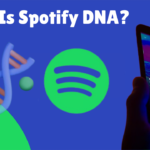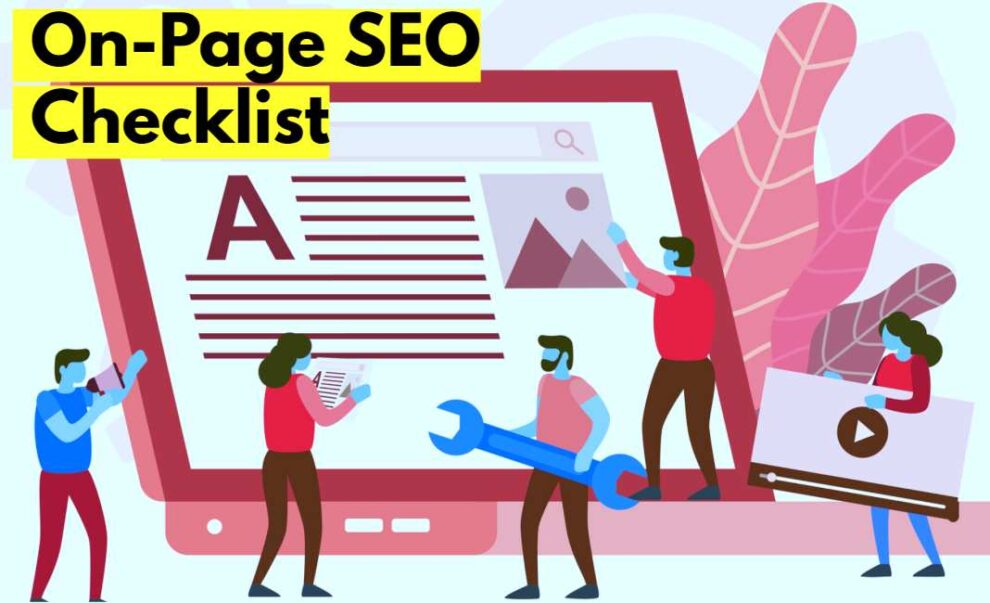On-page SEO has great significance to your website as a whole. With valuable factors to attract organic traffic to the site, they also influence your site’s pages to an extent. When you are thorough with the site and page optimization with an on-page SEO checklist, you have more chances to rank higher in the search engine result pages (SERPs).
This article is what it’s all about. We shall discuss your site’s on-page SEO checklist that works best in 2022. If you want more visitors to your website, you must be regularly updated with the changing SEO checklist.
SEO is Important for your site
While an on-page SEO checklist gives you a guideline of what and how things on your website page should be optimized, the end choice is up to you. You can optimize your webpage anyhow you want. The right topic for each page, your target audience by using the right keyword and phrases, etc.
If you think search engine optimization (SEO) is too much work, you can opt for many on-page SEO tools to optimize your page. Nonetheless, let us now have a gist of what on-page SEO is and its importance to your website and pages.
What is On-page SEO?
On-page SEO, also known as on-site SEO, is basically a process of optimizing different back-end and front-end components of a website that will enable the page to rank higher in SERPs by bringing in new organic traffic. On-page SEO has numerous elements, including HTML, content, and site structuring.
It optimizes the webpage’s content and its HTML source code to rank higher. You optimize the page based on what your users and visitors want. If we generally talk about SEO ranking factors, there are many. Besides On-page SEO, there are content SEO, technical SEO, Off-page SEO, and so on.
You should regularly focus on on-page SEO as it is crucial to your site. It helps optimize the site that adds value to what Google recognizes to rank higher in SERPs and attract visitors. Site optimization is vital to get recognition from both Google and visitors.
Since you are looking into an on-page SEO checklist for 2022, here is a list of the crucial factors or elements you should consider.
High-quality page content
What do you think is the core of on-page SEO, where everything is based on? It is, of course, the page content. On-page SEO will be fruitful only if the page content is of some value to the visitors and the website. Your content represents your website’s purpose and what you want to convey to the audience.
To create high-quality page content, you need to do keyword research and choose relevant and trendy keywords, and headlines visitors want to see and read about. Curating quality and valuable content is the base of on-page SEO.
Standard practices to curate quality content for your page include
- Creating engaging content with relevant visual elements.
- Use short-tailed and long-tailed keywords in the content as naturally as you can.
- Focus the writing style on a specific audience persona.
- Actively incorporate content that the audience needs and values.
- Develop content that your visitors will like and share.
- Optimize SEO considering the CTAs.
Include the primary keyword in the Title Tag and the URL
When people look for something in the search engines, they type the keyword first. Hence, putting the primary keyword of your content in the title tag increases the chances of appearing in the search results. The primary keyword is what most of the content is all about.
Another way to improve the ranking factor is by putting the keyword in the page URL. Although the impact is insignificant, it still works when optimizing the content.
Page titles
Page titles, often termed Title Tags are a vital SEO element. The title of your page content tells the users what the content is all about without going through the content. Page titles are crucial as they appear on the corresponding search pages when the user looks for them.
You should focus on the page keyword when setting the title tag. It also helps in ranking the site with proper intent. Insert the primary keyword as naturally as you can in the page title. They should be concise yet meaningful and understandable to the users. It should be unique yet descriptive about what the page content has to offer.
Also, many make a mistake here. They think the page title and H1 title tag are the same. But they are not. So, you should be careful and conscious when wrapping your page title and the H1 title tag.
Here are a few tricks to create the best page title:
- Recent Google update states to keep the Page title under 60 characters. That would keep the page title intact in the search results without parts getting cut off.
- Never use all caps in the page title.
- It is wise to add your brand name to the page title.
- Ensure your page title is relevant to the page content.
- Avoid overstuffing the title with the keyword. The algorithm might penalize the content for unnatural elements if the page title appears tacky and spammy.
Descriptive yet SEO-friendly page URLs
Every page you see on the search engine pages has unique and different URLs. No URL is the same, just like the IP addresses of computers. While URLs don’t have much significance to the on-page SEO checklist ranking higher, it is better not to avoid them.
- Make your page URL unique with a minimum of characters of up to only five words.
- Make it concise with no special characters.
- It is safe to include keywords to keep the consistency with the titles. That would help users identify its genuinity.
Headings
Headers or body tags are the HTML elements in the page content, like H1, H2, H3, and so on. Headers help organize the content throughout the page, making it easy for readers to determine and find their needs. It also distinguishes the part of the content the user is looking for in the search engine pages. Hence, based on the search intent, the content becomes relevant to the SERPs.
You can also use secondary keywords other than the primary ones in the headers. Input the most relevant secondary keywords in the H1 and H2 headers themselves. Your users may not want to search the entire content for what they need. Proper headers make the content easier to hover over. They are like a roadmap to the page.
Proper keyword placements
Overstuffing is terrible for your page if you want to rank higher on the search engines’ pages. On-page optimization does not encourage overdoing things more than necessary.
The best way to incorporate keywords in your page content is either through the page title, meta descriptions, URL, and subheadings. Or to include the primary keyword naturally in the first two-three paragraphs or within the first 100 words of the page content.
Keyword placement is a critical on-page SEO process. That helps Google understand what your page offers. For best results, you can input the keyword two to three times every two-three paragraphs. That creates a seamless flow to the consistency of the content.
However, you should know when to stop adding keywords or phrases. Bombarding or overstuffing the content will harm or manipulate your website’s SERPs ranking.
Meta descriptions
The meta descriptions are the small text snippets of the page content that helps the page show up in the SERP. They help your page stand out in the result pages. That snippet is enough to give the user a look into what your page holds.
Meta descriptions ideally present the primary keyword that compels the users to click and reach your page. It has a significant influence on the number of clicks that your page gets. If anyone shares your content, the meta descriptions will be copied over.
Here’s how you can form quality and clickable meta description of your content:
- While there is no particular limit to the characters of meta descriptions, the best is to wrap it under 160 characters.
- Do not input alphanumeric characters into the meta description. They only waste space.
- Ensure to incorporate the primary keyword of the content or the keyword phrase into the meta description.
- Instead of short and direct phases, use complete and compelling one or two sentences.
Focus on optimizing the UX (user experience)
Your content may hold quality information on what the user is searching for. But if the organization and visuals of the content are inappropriate, the users will leave your page almost instantly. That is why on-page SEO also includes optimizing the site experience for seamless user benefits and engagement.
Many elements influence a quality user experience. Some of them are:
- A responsive and compatible site design.
- Easy to read and understandable content.
- All the links embedded in the content are working and relevant.
- The site has a high loading speed on any device.
If your site is easy to navigate, users can easily find what they need. That will reduce the bounce rate improving the site performance.
Structured Markup
Another crucial factor of on-page SEO is the structured markup, better known as structured data. It is the process where you markup your website’s source code so that Google finds it easier to determine and understand various elements of your site content.
We have earlier discussed meta descriptions. Well, structured markup is like the base of featured text snippets in the meta descriptions and knowledge panels. When you search something on Google and find exactly what you are looking for in the search results, that is what a structured markup does to the page content.
Embedding internal links in the content
Internal linkings are an excellent way to promote your other pages to similar content on the same site. Placing internal links with relevant keywords and phrases makes it easier for users to find similar and related content on the same site. It creates a trail for the users to navigate and go through your page content. That helps generate higher user engagement and traffic to the site.
One thing that you should keep in mind when incorporating internal links to your content is to do so using relevant and clear, and descriptive text or anchors. That will let the users know how that particular information relates to the linked content.
As the user engagement on the site increases, your site page index will improve. That will help Google to recognize your site and eventually rank higher on the SERPs.
Image Alt-text
Quality content on the web is incomplete without any interesting visual elements. And in contrast to on-page SEO factors, Image Alt-text is optimizing the visual elements like the images and photos used in the content.
Image Alt-text enables Google to determine and recognize the images found in your content corresponding to what is being searched in the search engine. It is similar to how text-based results show up but in image-based results. When you do an image search, such on-page SEO is helpful to rank higher. You have to add Alt-text to the images in your content.
When using the Image Alt-text to optimize the images, keep these things in mind:
- Do not overstuff the text in the pictures with keywords.
- Make sure the text characters are less than 125 characters.
- The text must be contextually relevant to the overall page content.
- It should be as specific yet descriptive as possible to maintain clarity.
Insert LSI or secondary keywords into your content
Another vital aspect of keyword insertion in the content is the secondary keywords. Also known as Latent Semantic Indexing keywords, these are related phrases or keywords synonymous with the primary keyword.
The incorporation of secondary keywords in the content became popular after the release of the Hummingbird algorithm by Google. This algorithm identifies content and the page theme from other elements besides the primary keyword.
Adding LSI keywords in the content adds more context relevant to the broader perspective of the topic and the primary keyword. That way Google will recognize the page content as high quality and probably rank higher on the search result pages. Secondary keywords make the content more understandable to Google bots.
Conclusion
Hence, these are some of the best and most practical on-page SEO checklists in 2022 that you should apply to your site and page content.
On-page SEO helps with potential high ranking on SERPs and has other benefits. It is a cost-effective way to market your content better. You get more organic traffic and content relevant to your business.



















Add Comment